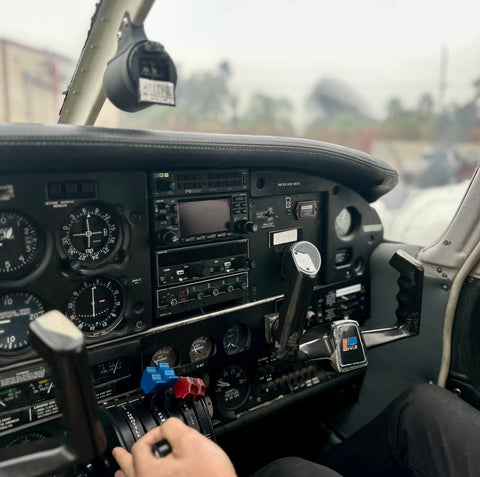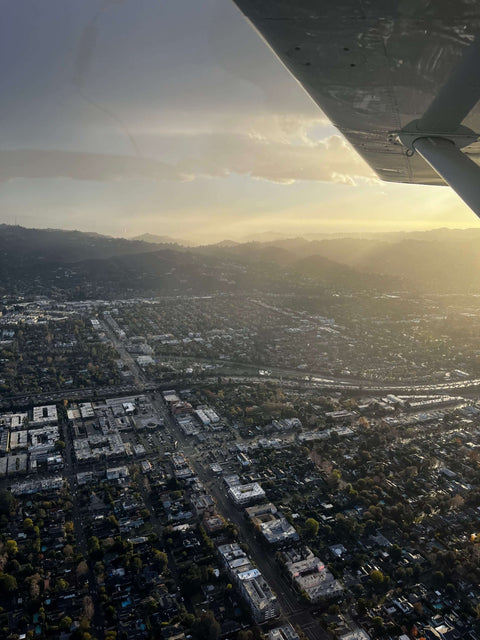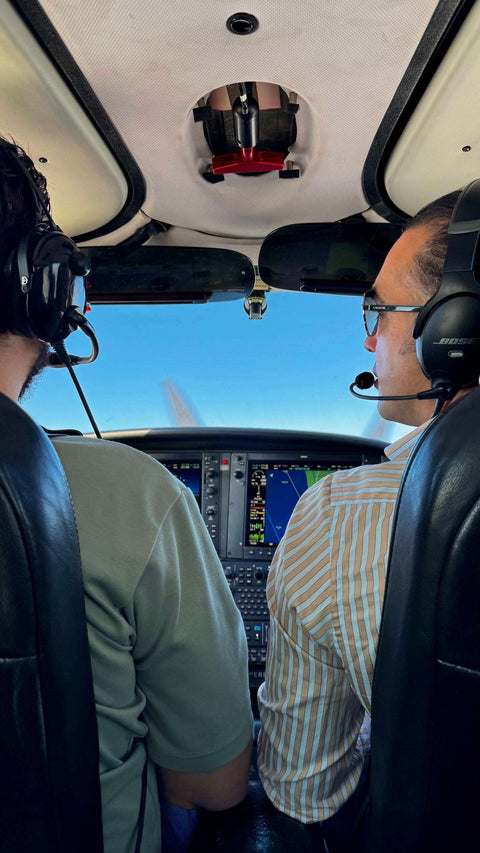Have you ever dreamed of soaring through the skies while getting paid to do what you love? If so, now is the perfect time to become a commercial pilot.
With the global pilot shortage expected to last through 2030, airlines are actively seeking new pilots to meet growing demand. The FAA estimates that approximately 14,500 new pilots will need to be hired annually in the U.S. alone. This shortage is primarily driven by a wave of retirements and the increasing need for air travel worldwide.
For aspiring aviators, this means job security, competitive salaries, and exciting career opportunities. But how do you become a commercial pilot? To begin flight training, aspiring commercial pilots must consider age requirements, complete ground school, accumulate flight hours, and pass both a knowledge test and a practical exam. What are the steps, costs, and time commitments involved?
In this guide, we’ll walk you through every step of the journey—from earning your private pilot license to landing your first airline job. Whether you’re starting from scratch or looking to transition into a professional aviation career, this guide will provide you with everything you need to know.
Eligibility and Requirements
Age and Background Check Requirements
To embark on a career as an airline pilot, you must meet specific age and background check requirements set by the Federal Aviation Administration (FAA). Aspiring airline pilots must be at least 23 years old and hold a valid Airline Transport Pilot (ATP) certificate. This certification is the highest level of aircraft pilot certification and is essential for those aiming to fly for major or regional airlines.
In addition to age requirements, you must undergo a thorough background check and obtain a security clearance from the Transportation Security Administration (TSA). This process involves providing fingerprints and undergoing a comprehensive background investigation to ensure you meet the security standards required for airline pilots. These steps are crucial to maintaining the safety and security of air travel.
Vision and Medical Requirements
Airline pilots must also meet stringent vision and medical requirements to ensure they are fit to fly. You must have perfect vision, either naturally or corrected with lenses, to meet the FAA’s standards. This means you should have 20/20 vision in each eye, with or without corrective lenses.
Furthermore, you must pass a medical examination conducted by an FAA-designated Aviation Medical Examiner (AME). This examination assesses your overall health, including your cardiovascular, neurological, and psychological well-being. The goal is to ensure that you are physically and mentally capable of handling the responsibilities of an airline pilot. Meeting these medical requirements is essential for obtaining and maintaining your pilot certification.
Step 1: Earn Your Private Pilot License (PPL)
Before you can fly professionally, you’ll need to start with the Private Pilot License (PPL). Before that, it is crucial to obtain a student pilot certificate, which involves an application process through the Integrated Airman Certification and Rating Application (IACRA) and a review by certified authorities. This certificate authorizes you for solo flights. This is the foundation of your aviation journey and allows you to fly solo and carry passengers—but not for hire.
What is a Private Pilot License?
A PPL is the first step toward becoming a professional pilot. It gives you the freedom to fly small, single-engine aircraftin good weather conditions. You’ll learn essential flying skills, including takeoffs, landings, navigation, emergency procedures, and radio communications. Various pilot training programs offer comprehensive education and career pathways for aspiring pilots, covering entry criteria, benefits, and support systems available through different flight schools.
Private Pilot License Requirements
To earn your PPL, you must:
✅ Be at least 17 years old
✅ Obtain a Third-Class FAA Medical Certificate
✅ Complete at least 35-40 hours of flight training (varies by FAA Part 141 or Part 61 regulations)
✅ Pass the FAA written knowledge test
✅ Complete a checkride with an FAA examiner
How Long Does It Take to Earn a PPL?
The timeline varies, but students who train full-time can complete their PPL in as little as 2-3 months. If you’re training part-time, expect it to take around 6-12 months.
Choosing a Flight School and Training Program
Researching Pilot Schools and Training Programs
Choosing the right flight school and training program is a pivotal step in your journey to becoming an airline pilot. The quality of your flight training will significantly impact your skills, knowledge, and career prospects. Therefore, it’s essential to conduct thorough research to find a flight school that aligns with your needs and goals.
Start by looking for flight schools that are certified by the FAA, as this certification ensures that the school meets specific safety and training standards. Additionally, consider the school’s reputation within the aviation industry. Reading reviews and speaking with current or former students can provide valuable insights into the quality of training you can expect.
When evaluating flight schools, pay attention to the type of aircraft used for training. Modern, well-maintained aircraft can enhance your learning experience and ensure your safety. The experience and qualifications of the flight instructors are equally important. Instructors with extensive flying experience and a passion for teaching can make a significant difference in your training.
Cost is another critical factor to consider. Flight training can be expensive, so it’s important to understand the total cost of the program, including any additional fees for materials, exams, and flight hours. Some schools offer financial aid or payment plans, which can help make training more affordable.
For those aiming to become commercial airline pilots, it’s crucial to choose a program that offers a commercial pilot license (CPL) and a multi-engine rating. These certifications are necessary for flying larger, more complex aircraft. Additionally, obtaining a certified flight instructor (CFI) rating can be beneficial, as it allows you to build flight hours and gain valuable teaching experience.
Here are some popular flight schools and training programs for aspiring airline pilots:
-
ATP Flight School: Offers a comprehensive professional pilot program that includes a commercial pilot license (CPL) and a multi-engine rating.
-
FlightSafety International: Provides a range of training programs for commercial pilots, including a CPL and a multi-engine rating.
-
L3Harris Flight Academy: Offers a professional pilot program that includes a CPL, a multi-engine rating, and a certified flight instructor (CFI) rating.
By carefully researching and selecting the right flight school and training program, you can set yourself up for a successful and rewarding career as an airline pilot.
Step 2: Get Your Instrument Rating (IR)
Once you’ve earned your PPL, the next step is obtaining an Instrument Rating (IR). This certification allows you to fly in poor weather conditions using only your instruments.
Why Is an Instrument Rating Important?
✈️ Increases safety and skill level as a pilot
✈️ Required for commercial pilots flying in varying weather conditions
✈️ Makes you more competitive for airline jobs
Instrument Rating Requirements
To qualify, you must:
✔ Hold a PPL
✔ Log at least 40 hours of instrument flight training
✔ Pass the FAA instrument rating written exam
✔ Complete an instrument checkride
With an Instrument Rating, you can legally fly through clouds, fog, and rain, making you a much more capable and employable pilot.
Step 3: Earn Your Commercial Pilot License (CPL)
Now comes the exciting part—earning your Commercial Pilot License (CPL), which allows you to legally get paid to fly. To become a commercial airline pilot, you need to complete rigorous training, obtain necessary certifications, and meet medical standards. Additionally, understanding the potential salary and job market is crucial for aspiring pilots.
What is a Commercial Pilot License?
A CPL certifies you to be compensated for flying. Obtaining an Airline Transport Pilot certificate is crucial for those aspiring to become professional airline pilots, as it is the highest level of aircraft pilot certification. Candidates must be at least 23 years old and should understand the investment in training and career longevity. It is required for jobs such as: ✅ Airline pilot✅ Corporate pilot✅ Charter pilot✅ Cargo pilot✅ Aerial survey pilot
Commercial Pilot License Requirements
To obtain your CPL, you must:
✅ Be at least 18 years old
✅ Hold a Second-Class FAA Medical Certificate
✅ Complete 190-250 flight hours (varies by FAA Part 141 or Part 61)
✅ Pass the FAA commercial pilot written exam
✅ Complete a checkride with an FAA examiner
FAA Part 141 vs. Part 61: Which Is Better?
-
FAA Part 141 is a structured, accelerated program with a minimum of 190 flight hours.
-
FAA Part 61 is more flexible but requires 250 flight hours to qualify for a CPL.
If you want to save time and training costs, a Part 141 flight school is the best option.
Step 4: Earn a Multi-Engine Rating
To fly commercial aircraft with more than one engine, you’ll need a Multi-Engine Rating (ME).
What is a Multi-Engine Rating?
A Multi-Engine Rating allows you to fly larger, more powerful airplanes, making you more attractive to airlines.
Multi-Engine Rating Requirements
✔ Hold at least a PPL
✔ Complete 10-15 hours of multi-engine flight training
✔ Pass an FAA checkride
Since most commercial aircraft have multiple engines, this rating is a must-have for aspiring airline pilots.
Step 5: Get Your Flight Instructor Certificate (CFI/CFII)
To build the 1,500 flight hours needed for an Airline Transport Pilot License (ATPL), many pilots become Certified Flight Instructors (CFIs).
Why Become a Flight Instructor?
✔ Get paid to fly while building flight hours
✔ Gain valuable teaching and leadership skills
✔ Make aviation more affordable
Certified Flight Instructor Requirements
✅ Hold a Commercial Pilot License (CPL)
✅ Complete instructor training
✅ Pass a CFI checkride
For added flexibility, you can also obtain a Certified Flight Instructor – Instrument (CFII) rating, allowing you to teach instrument flight students.
Step 6: Build 1,500 Flight Hours
To qualify for an Airline Transport Pilot License (ATPL)—required for airline jobs—you must accumulate 1,500 flight hours.
How Do Pilots Build Flight Hours?
✈️ Working as a CFI (Certified Flight Instructor)
✈️ Flying charter or cargo operations
✈️ Serving as an aerial survey or banner tow pilot
This phase typically takes 1-2 years, depending on how frequently you fly.
Step 7: Get Hired by a Regional Airline
Once you hit 1,500 flight hours, you can apply for an Airline Transport Pilot License (ATPL) and start applying for airline jobs.
What is the Average Commercial Pilot Salary?
Pilot salaries vary, but here’s a general breakdown:
🔹 First-Year Regional Airline Pilot: $60,000 – $90,000 🔹 Major Airline Captain: $200,000+
The Bureau of Labor Statistics (BLS) reports that airline pilots in the U.S. earn an average salary of $134,630 per year, with experienced captains making significantly more. Pilots working for major airlines typically earn higher salaries and have better job prospects compared to those at regional airlines.
What Do Commercial Pilots Do?
A commercial pilot’s job goes beyond just flying. Daily responsibilities include: A comprehensive overview of a pilot career involves understanding career requirements, job opportunities, and potential career advancements.
✔ Pre-Flight Checks – Inspecting the aircraft, reviewing flight plans, and checking weather conditions. ✔ Navigating & Communicating – Staying in contact with air traffic control. ✔ Ensuring Passenger Safety – Monitoring aircraft systems throughout the flight.
In larger aircraft, two pilots share responsibilities: 👨✈️ Captain – In charge of the flight and crew. 👨✈️ First Officer – Assists the captain and handles communications.
Start Your Journey at LA Flight School
If you’re ready to become a commercial pilot, the best way to succeed is by training at a top-rated flight school. At LA Flight School, we offer:
✅ Accelerated programs
✅ FAA Part 141 & Part 61 training
✅ Experienced airline instructors
✅ Flexible scheduling
📞 Contact us today to schedule your free consultation and discovery flight! Your dream career is just a flight away! ✈️



